Expert Tips
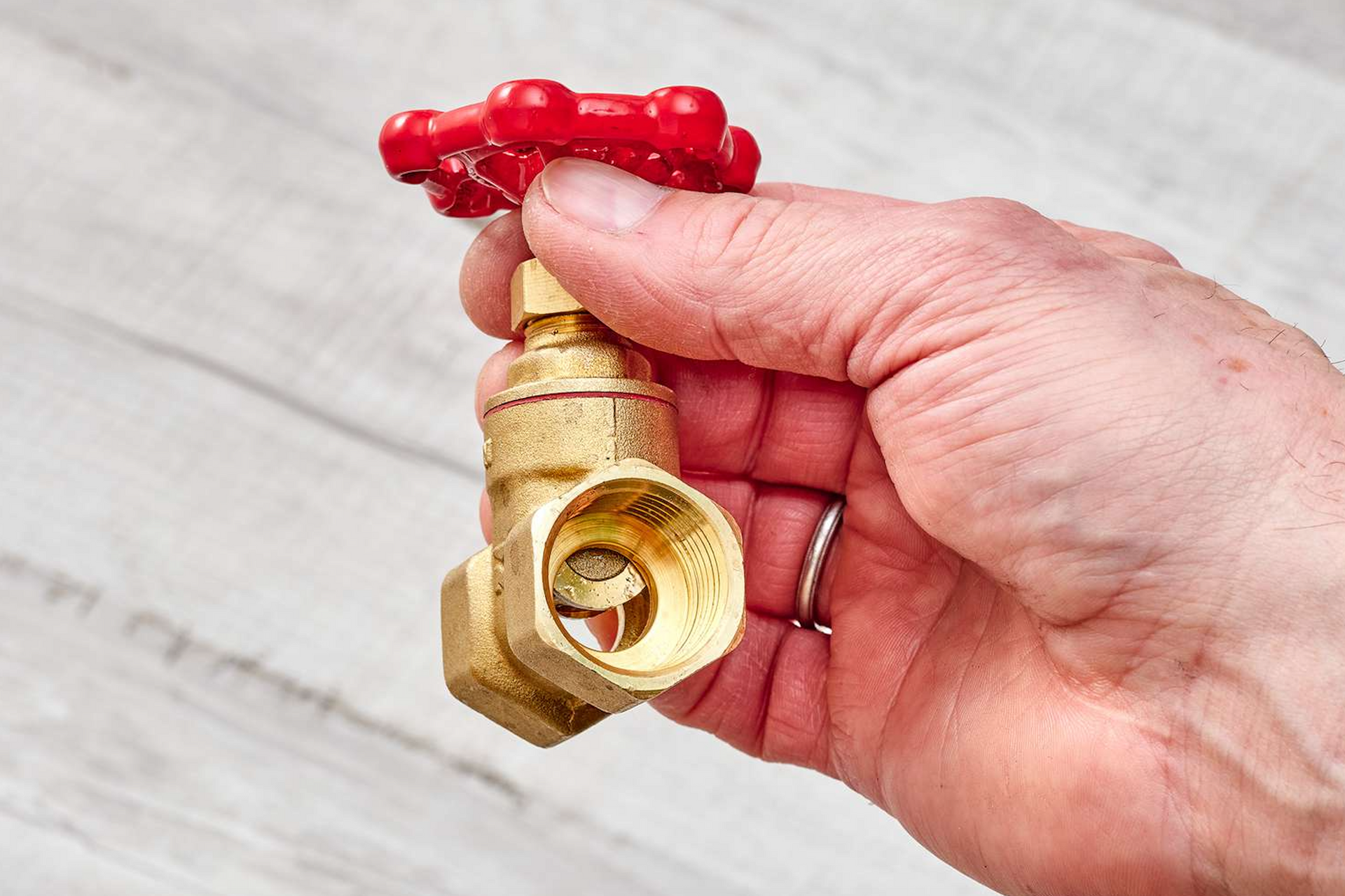
As the trusted experts at Aaron's Water Heaters, we understand the importance of a reliable residential water heater, especially during those chilly Michigan winters. Today, we want to dive into a crucial aspect of your water heating system that often goes unnoticed – the valves. Specifically, we'll be comparing ball valves and gate valves, shedding light on their differences and helping you make an informed decision for your replacement water heater installation. The Basics: Before we delve into the specifics of ball and gate valves, let's briefly go over their primary functions. Valves play a pivotal role in controlling the flow of water within your plumbing system. They act as gatekeepers, allowing you to shut off or regulate the water supply to different parts of your home. Ball Valves: Ball valves are recognized for their simplicity and efficiency. They feature a spherical disc inside the valve body, which can be rotated to control the flow of water. When the handle is perpendicular to the pipe, the valve is closed, and when it's parallel, the valve is open. This straightforward design allows for quick and precise control over the water flow, making ball valves a popular choice for many residential applications. Advantages of Ball Valves: * Quick and Easy Operation: Ball valves are known for their user-friendly operation, allowing homeowners to shut off the water supply rapidly in case of emergencies or maintenance. * Durability: The design of ball valves makes them less prone to leaks, ensuring a longer lifespan and reduced maintenance requirements.
* Reliability: Ball valves provide a tight seal, minimizing the risk of water wastage and maintaining a consistent water flow. Gate Valves: Gate valves, on the other hand, employ a flat or wedge-shaped gate that moves up and down within the valve body. When the gate is raised, water can flow through; when lowered, the valve is closed. While gate valves are also widely used, they differ from ball valves in terms of operation and application. Advantages of Gate Valves: * Full Flow Control: Gate valves offer full, unrestricted flow when fully open, making them suitable for applications where maximum water flow is essential.
* Less Susceptible to Clogs: The straightforward design of gate valves makes them less prone to clogging, ensuring consistent performance over time. Choosing the Right Valve for Your Water Heater (and other plumbing in your home): When it comes to selecting the right valve for your residential water heater in here in Michigan, several factors come into play. Consider the specific requirements of your system, your preferences for ease of use, and the overall functionality you desire. For most homeowners in our region, the simplicity and reliability of ball valves make them an excellent choice. However, if your water heater demands high water flow and you prioritize maximum control, a gate valve might be the better fit. Conclusion: At Aaron's Water Heaters, we prioritize not only delivering top-notch replacement water heater installations but also ensuring you understand the components of your plumbing system. Knowing the difference between ball and gate valves empowers you to make informed decisions for your home. Contact Aaron's Water Heaters today for expert advice and seamless water heater installations tailored to the unique needs of fellow Michigan homeowners. Stay warm and worry-free with Aaron's!

Water heaters play a crucial role in our daily lives, providing us with hot water for showers, cleaning, and various household tasks. While they are essential, it's important for homeowners to be aware of potential safety hazards associated with water heaters. In this article, we will discuss key aspects of water heater safety and offer tips to ensure your system operates smoothly without posing risks to your home and family. Temperature Settings: One of the first considerations for water heater safety is setting the temperature at an appropriate level. The U.S. Department of Energy recommends a temperature setting of 120°F to prevent scalding while still meeting the needs of most household activities. Higher temperatures can increase the risk of burns, especially for children and the elderly. Regular Maintenance: Regular maintenance is essential for the safe and efficient operation of your water heater. Over time, sediment can accumulate at the bottom of the tank, reducing its efficiency and potentially causing overheating. Schedule annual flushing of the tank to remove sediment buildup and ensure optimal performance. Pressure Relief Valve: Every water heater is equipped with a pressure relief valve as a safety measure. This valve releases excess pressure from the tank, preventing potential explosions. Homeowners should test this valve periodically to ensure it is functioning correctly. If you find any issues, contact a professional plumber to address the problem promptly. Proper Ventilation: Gas-powered water heaters require proper ventilation to ensure the safe expulsion of combustion gases. Make sure the area around your water heater is well-ventilated and free from obstructions. Additionally, have a professional inspect the ventilation system annually to confirm its effectiveness. Check for Leaks: Water leaks around your water heater can lead to serious damage and pose safety risks. Regularly inspect the area around the heater for any signs of leakage, including rust or water puddles. Address any leaks promptly by tightening connections or replacing faulty components. Age of the Water Heater: Like all appliances, water heaters have a lifespan. Most units last around 10-15 years. If your water heater is nearing the end of its expected lifespan, consider proactively replacing it to avoid potential breakdowns and safety hazards associated with aging systems. Carbon Monoxide Detection: For gas water heaters, it's crucial to have a functioning carbon monoxide detector installed in the vicinity. Carbon monoxide is a colorless, odorless gas that can be produced by gas-burning appliances. Regularly check your detector and replace the batteries to ensure it is operational at all times. Conclusion: Prioritizing water heater safety is a responsibility that every homeowner should take seriously. By following these essential tips and conducting regular inspections and maintenance, you can ensure your water heater operates efficiently and safely. If you ever have concerns or encounter issues beyond your expertise, don't hesitate to consult with a professional plumber to address the issue promptly. Your family's safety and the longevity of your water heater depend on proactive care and attention to these crucial details.

Ever wonder what that random bare wire is sticking out of the ground near your gas meter or along the foundation of your house? No, someone didn’t forget to connect it to a circuit. Its purpose is safety! Let us explain… The underground infrastructure of our cities and towns is complex, carrying everything from water and gas to electricity and communications. For those in industries such as plumbing, like us at Aaron's Water Heaters, understanding the nuances of this underground world is essential. One such nuance is the use of tracer wires, which play a critical role in locating and identifying these utilities. In Michigan, understanding the color code of these tracer wires is pivotal. Here's a dive into what each color signifies according to the Michigan building code. What are Tracer Wires? Before we delve into the color codes, it's crucial to understand what tracer wires are. They're conductive wires buried alongside underground utilities like water lines, gas lines, or other conduits. These wires make it possible to locate the utilities later using an electronic locator, preventing potential damage to the infrastructure and ensuring safety during any excavation or drilling. Michigan Building Code: Tracer Wire Colors and Their Meanings The Michigan building code adopts the APWA (American Public Works Association) Uniform Color Code for marking underground utilities. Each color represents a different type of utility. Let's break down the significance of each: Red: Electrical power lines, cables, conduit, and lighting cables. The presence of a red tracer wire usually indicates that there's an electrical utility underground. Caution is advised. Yellow: Gas, oil, steam, petroleum, or gaseous materials. Yellow is a warning color, indicating potential flammable and hazardous materials below. Orange: Communication, alarm or signal lines, and cables or conduit. This color is generally associated with telecommunication lines like phone, internet, or cable TV. Blue: Potable water. Blue tracer wires lead to clean drinking water sources, and it's essential not to contaminate these lines during any work. Purple: Reclaimed water, irrigation, and slurry lines. Purple indicates non-potable water, used mainly for irrigation or industrial purposes. Green: Sewers and drain lines. Green tracer wires typically show the pathways of waste and stormwater systems. White: Proposed excavation. This color isn't necessarily for a tracer wire but is used in marking to indicate a planned excavation site. Pink: Temporary survey markings. Again, pink might not be associated with a tracer wire directly, but it is important in the realm of excavation and utility mapping. Why is Respecting these Color Codes Important? Mistaking one utility for another can have catastrophic consequences. For example, puncturing a gas line while thinking it's a water line can lead to explosions. Additionally, not locating utilities before digging can result in costly repairs, disrupted services, and potential legal liabilities. Hence, respecting and understanding the color codes is paramount. Final Thoughts While Aaron's Water Heaters specializes in keeping your home's water heating systems optimal, we believe in a holistic understanding of all things related to home infrastructure. Knowledge of underground utilities and the importance of tracer wires is just one aspect of that. If you're undertaking any digging or excavation, always ensure you're aware of the tracer wire color codes in your region. Remember, safety always comes first. Stay informed and ensure any professionals you hire are knowledgeable about the local building codes and best practices. If you have any questions related to water heaters or associated plumbing, don't hesitate to get in touch with Aaron's Water Heaters. We're here to help!
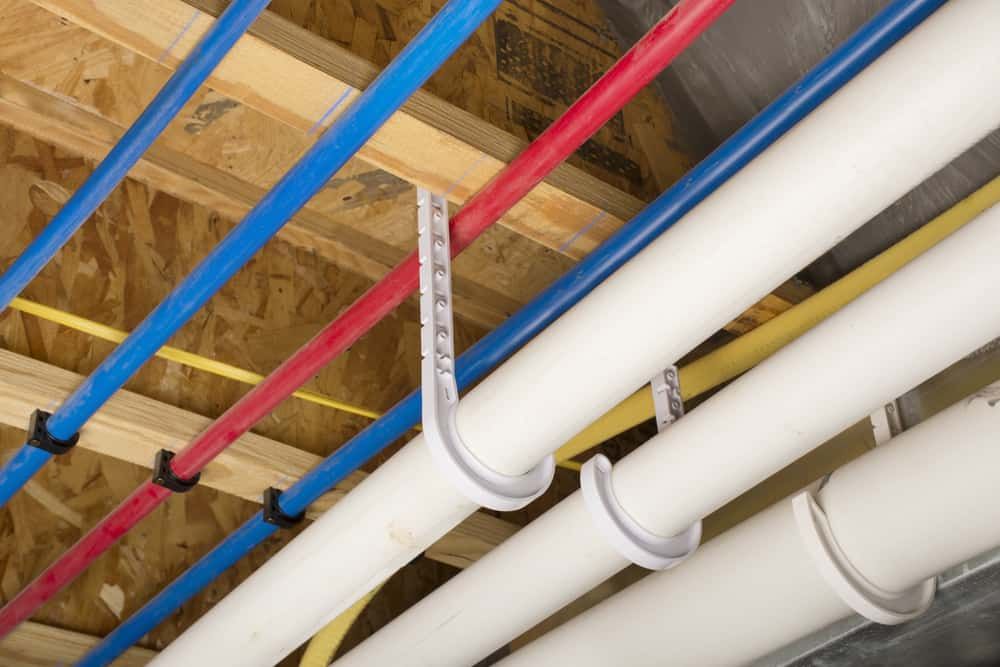
The realm of residential plumbing has seen numerous technological advancements, with materials and methods evolving to meet the demands of modern homes. Among the most significant shifts in plumbing technology is the transition from traditional materials like galvanized steel and copper to the now-popular PEX (cross-linked polyethylene) tubing. This article aims to provide a comparative analysis of these materials, exploring the pros and cons of each. 1. Historical Perspective Galvanized Pipes: These are steel pipes coated with a layer of zinc to prevent rusting. They became popular in the early 20th century, replacing lead as a primary plumbing material. Copper Pipes: Copper has been used for plumbing purposes for centuries. It gained widespread popularity in the latter half of the 20th century due to its reliability and durability. PEX Tubing: Introduced in the 1960s and popularized in the U.S. in the 1980s, PEX is a flexible plastic tubing that offers numerous advantages over traditional materials. 2. Installation Galvanized/Copper: Requires skilled labor, soldering, and joining methods that can be time-consuming and potentially expensive. PEX: Known for its flexibility, PEX can be snaked into walls, reducing the need for joints and fittings. This results in quicker and often cheaper installations. 3. Durability and Lifespan Galvanized: Over time, the protective zinc layer can corrode, leading to reduced water flow and potential leaks. Lifespan typically ranges from 20-50 years. Copper: Resistant to corrosion and can last up to 70 years or more. However, it's vulnerable to pinhole leaks in areas with acidic water. PEX: Resistant to corrosion and scale buildup. While its lifespan is still under observation, it's estimated to last 40-50 years or longer. 4. Cost Galvanized/Copper: Generally more expensive due to material costs and installation complexity. PEX: Often cheaper in terms of material costs and can also result in lower labor costs due to easier installation. 5. Health and Safety Galvanized: Older pipes might release lead into the water if they were connected using lead-based solder. Copper: While safe, copper can sometimes alter the taste of water, especially if the water is acidic. PEX: Some concerns were raised about potential contaminants leaching from the tubing. However, when used according to established safety guidelines, PEX meets national standards for safe drinking water. 6. Environmental Considerations Galvanized/Copper: Mining, processing, and transportation of these metals have significant environmental impacts. PEX: Producing PEX has a smaller carbon footprint than metal pipes. Additionally, its lightweight nature reduces transportation emissions. 7. Flexibility and Expansion Galvanized/Copper: Rigid and susceptible to bursting when water inside freezes. PEX: Flexible and can expand, significantly reducing the risk of burst pipes due to freezing. Conclusion While galvanized and copper plumbing has proven reliable over the years, the advent of PEX offers homeowners a modern alternative that's easier to install, cost-effective, and versatile. As with all home improvement decisions, it's essential to consider local regulations, water quality, and individual needs before making a choice. When considering repiping or new installations, consulting with a trusted plumber can offer valuable insights tailored to specific circumstances. As technologies and materials continue to evolve, staying informed ensures the best choices for durability, safety, and efficiency in home plumbing systems.

The heart of a functional home lies hidden beneath its floors and behind its walls. We're talking about plumbing - the intricate system responsible for the easy water flow in and out of your dwelling. While often overlooked, strategic improvements in your home's plumbing can amplify its value and safety and yield a substantial Return on Investment (ROI). Here's how: 1. Increasing Home Value with Modern Plumbing Tangible Asset Improvement: Just as you'd upgrade your kitchen or bathroom fixtures, upgrading plumbing is a tangible asset improvement. Potential buyers value homes without the looming threat of plumbing disasters. Appeal to Buyers: Modern plumbing can be a strong selling point. Potential buyers will be attracted to homes where plumbing issues have been addressed proactively, ensuring they won't inherit future problems. Energy and Water Efficiency: Introducing energy-efficient systems like tankless water heaters or water-saving toilets can increase your home's eco-friendly appeal while potentially reducing monthly utility bills. 2. Ensuring Safety with Up-to-date Plumbing Prevent Water Damage: Old, corroded, or malfunctioning plumbing can lead to leaks, which, if unnoticed, can cause substantial structural damage, mold growth, and harm to personal property. Health Concerns: Stale water in outdated systems or the corrosion of pipes can lead to water contamination. Newer plumbing systems reduce such risks, ensuring the water you drink and use daily is free from potential toxins. Avoiding Catastrophic Failures: Aging sewer lines or main water lines can lead to severe home disasters. Updating these can prevent incidents that can displace you from your home and result in high repair costs. 3. ROI: Understanding the Financial Upsides Cost Savings in the Long Run: Investing in plumbing now can prevent high-cost repairs in the future. For instance, a minor undetected leak can lead to thousands in water damage repairs. Energy Efficiency Equals Cost Efficiency: Modern plumbing appliances and fixtures are designed to be more water and energy-efficient. Over time, these reductions in utility bills can offset the initial investment cost. Increased Resale Value: Homes with recently updated plumbing systems can command higher market prices. The peace of mind a new homeowner gains from knowing they won't face immediate plumbing issues can be a substantial financial benefit for the seller. Conclusion While it might be tempting to invest only in surface-level home improvements, the wise homeowner knows that what lies beneath holds immense value. By improving residential plumbing, not only do you enhance the safety and functionality of your home, but you also invest in its long-term financial worth. Given the myriad of benefits and the potential for a significant ROI, plumbing improvements emerge as a strategic move for every homeowner aiming to elevate their living space. When considering such upgrades, always consult with a professional plumber to guide you in making the best decisions for your unique home and needs.
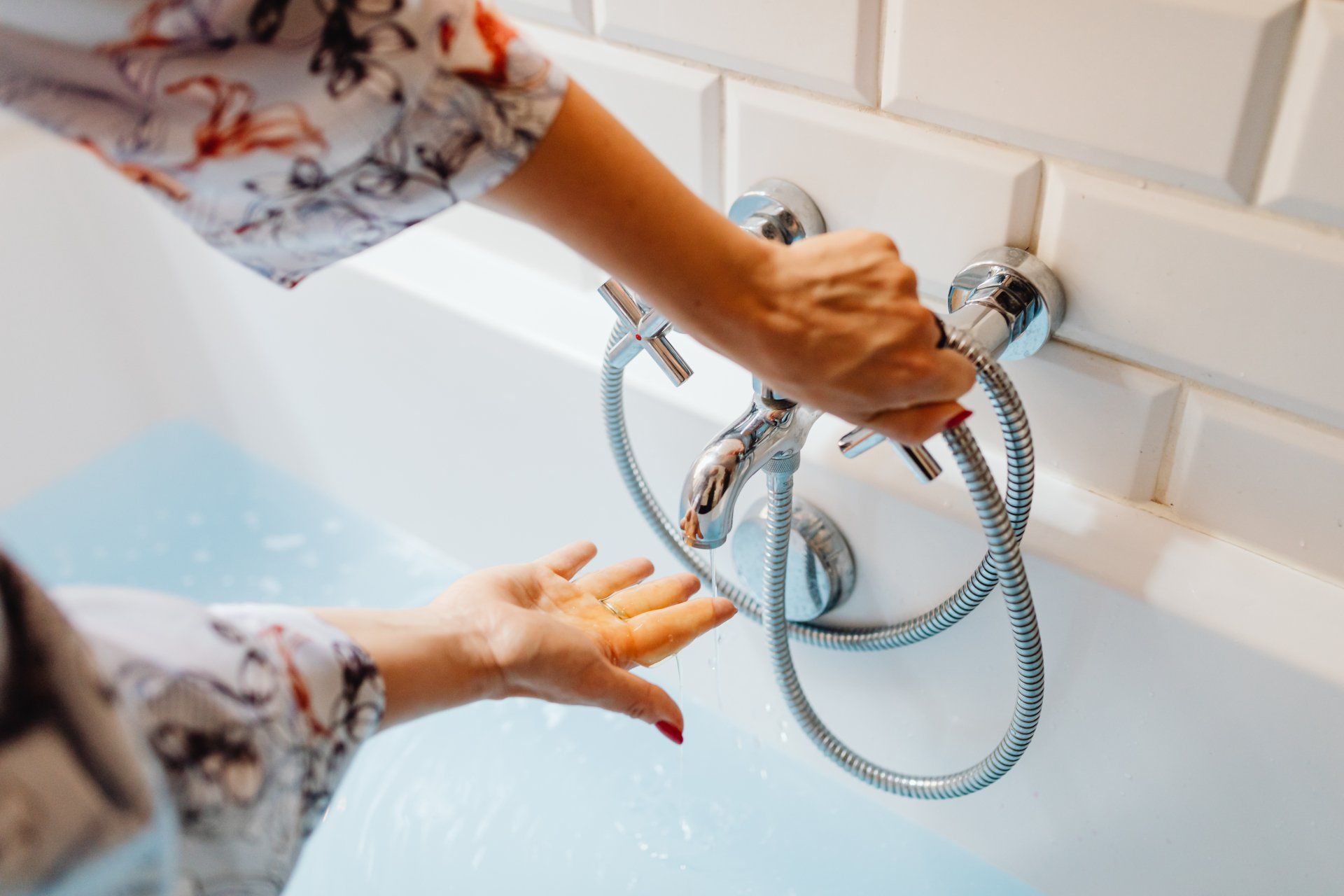
A hot shower, a warm bath, or just the simple pleasure of running warm water over your hands in the middle of winter, our water heaters play an unsung role in the background of our daily routines. But are you getting the most out of your water heater? One critical factor in optimizing its efficiency and safety is ensuring you've selected and set the right temperature. Here’s a guide from the team at Aarons Water Heaters to help you navigate this. 1. Understanding the Standard Setting Most water heaters come preset at 140°F (60°C). While this temperature ensures the eradication of harmful bacteria like Legionella, it might be hotter than necessary for most homes. 2. The Recommended Temperature The U.S. Department of Energy recommends setting your water heater to 120°F (49°C). Here’s why: Safety: At 140°F, water takes only five seconds to cause third-degree burns. Lowering it to 120°F increases the reaction time, reducing the risk of severe burns, especially in households with children or elderly residents. Energy Savings: For every 10°F reduction in water temperature, homeowners can save between 3%-5% on energy costs. Prolonging Heater Life: Lower temperatures reduce the risk of mineral buildup and corrosion, prolonging the water heater’s life. 3. Adjusting to Your Needs While 120°F is a solid recommendation for most households, you might need to adjust based on specific needs: High Demand: Larger families or homes with whirlpool tubs might require higher settings to ensure there’s enough hot water for everyone. Medical Needs: If someone in your household has a suppressed immune system, you might consider maintaining the 140°F setting to ensure all harmful bacteria are eliminated. Dishwashers: Older dishwasher models might need a higher water temperature for optimal cleaning. Check your appliance's manual. 4. How to Adjust the Temperature Here’s a general guideline: Turn Off Power: For electric heaters, switch off the circuit breaker. For gas heaters, turn the thermostat to the “pilot” setting. Locate the Thermostat: On electric heaters, you might find two thermostats, one at the top and one at the bottom. Gas heaters typically have a dial at the bottom. Adjust the Temperature: Use a screwdriver for electric heaters. Adjust both thermostats to the same temperature. For gas heaters, simply rotate the dial. Restore Power: Turn the circuit breaker back on for electric heaters or set the dial away from the “pilot” setting for gas heaters. 5. Regular Monitoring Remember, as with any household equipment, regular monitoring is key: Test the Temperature: Use a cooking thermometer. Let hot water run for a few minutes, then fill a glass and record the temperature. Annual Checkup: It's always a good idea to get your water heater inspected annually. This ensures optimal performance and safety. Conclusion Selecting and setting the right temperature for your water heater is not just about comfort but also safety, energy efficiency, and longevity of the appliance. With a balanced approach, you can ensure your water heater serves you efficiently for years to come. If you have any questions or need expert advice on setting the right temperature, the team at Aarons Water Heaters is here to help. Your comfort and safety are our priority!
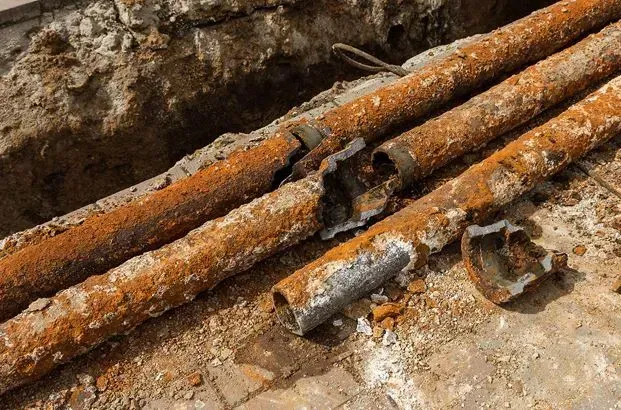
Buying an existing home can be an exciting venture – you're not just purchasing property but also history, character, and a place to create new memories. However, older homes come with their own set of challenges, especially when it comes to plumbing. Before you sign on the dotted line, it's essential to be aware of potential plumbing issues. Here are some red flags to look for, brought to you by the experts at Aarons Water Heaters: 1. Discolored Water Turn on the faucets in the home to check the water color. If it’s any shade other than clear – brown, yellow, or cloudy – it could indicate corrosion in the pipes or issues with the local water supply. 2. Low Water Pressure Reduced water pressure might seem like a minor inconvenience, but it could suggest more severe problems like corroded pipes, hidden leaks, or issues with the local water supply. 3. Outdated Water Heater Inspect the water heater. A rusty tank, outdated models, or any signs of leakage are causes for concern. Additionally, if the water heater is over 10-15 years old, it might need a replacement soon. 4. Noisy Pipes If you hear rattling, banging, or any strange noises when you turn on the faucets or flush the toilets, it could indicate loose pipes or water pressure issues. 5. Signs of Previous Water Damage Look for dark spots on the walls or ceilings, warped floorboards, or a musty smell. These can indicate past leaks or flooding issues. 6. Slow Drains Drains that empty slowly could mean blockages or more severe issues further down the line, like tree root invasions or structural problems. 7. Unusual Toilet Behavior If the toilet makes strange noises, doesn't flush correctly, or continuously runs, it might signal underlying problems with the septic system or general plumbing issues. 8. Exposed Pipes Inspect any visible pipes in the home, including in basements, crawl spaces, and utility rooms. Look for signs of corrosion, leaks, or DIY patches, which might not meet professional standards. 9. Sewer and Septic Issues Ask about the age and condition of the sewer or septic system. Backups, unpleasant odors, or wet spots in the yard can indicate problems. 10. Older Pipe Materials Homes built before the 1970s might have galvanized pipes, which are prone to corrosion and can reduce water quality. Even more concerning, some old homes may still have lead pipes, which pose severe health risks. 11. Inconsistent Water Temperature If you experience rapid changes in water temperature while testing showers or faucets, there might be issues with the water heater or mixing valve. Conclusion While some plumbing issues in older homes can be easily addressed, others might require substantial repairs or replacements, leading to significant expenses. By being aware of these red flags, potential homeowners can make informed decisions and negotiate effectively. While some plumbing issues in older homes can be easily addressed, others might require substantial repairs or replacements, leading to significant expenses. By being aware of these red flags, potential homeowners can make informed decisions and negotiate effectively. If you’re considering buying an existing home and need a thorough plumbing inspection of your water heater and filtration system, the team is here to assist. We bring our expertise in water heaters and comprehensive plumbing knowledge to provide you with the insights you need for a smooth home-buying experience.
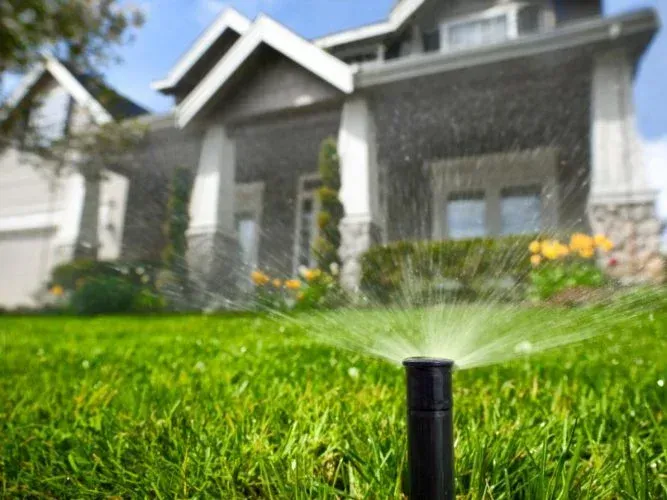
When homeowners think of water heaters, the focus often turns to indoor uses like showering or washing dishes. However, understanding your home's water system extends far beyond the interior. As many turn to green lawns and blooming gardens, residential irrigation systems are becoming increasingly popular. But with such systems come responsibilities. Two critical components of a safe and efficient irrigation system are a separate water meter and a backflow preventer. In this article, we’ll delve into why these components are not just advantageous, but essential. 1. The Importance of a Separate Water Meter for Irrigation: Cost-Efficiency: By having a separate meter for irrigation, homeowners can precisely track the amount of water used exclusively for landscaping. This precise tracking can often lead to lower sewage fees, as many municipalities charge these based on the assumption that indoor water usage returns to the sewage system. Water used for irrigation doesn’t, so you won’t be paying unnecessary costs. Monitor Usage: With a dedicated meter, homeowners can monitor any unusual spikes in water usage, indicating potential leaks in the system. This can save significant amounts of water and, by extension, money. Accurate Billing: Many municipalities offer tiered water pricing. By separating irrigation usage from general household usage, you ensure you're billed correctly and can manage your usage more effectively. 2. The Vital Role of Backflow Preventers: Protecting Your Water Supply: Backflow preventers are essential because they stop water from flowing back into the main water supply. Without them, contaminants like pesticides, fertilizers, and other chemicals can get siphoned back into the primary water supply, posing health risks. Regulatory Compliance: Many local and state regulations require the installation of backflow preventers for irrigation systems. This isn't just bureaucracy; it's a safety measure. Non-compliance can lead to penalties and even legal implications. Preventing Damage: In the event of sudden water pressure changes, backflow preventers help maintain steady flow, ensuring that your irrigation system isn't damaged by unexpected surges. 3. How Both Work Together: Unified System Check: With a separate meter and backflow preventer in place, homeowners can periodically check the health and efficiency of their entire irrigation system. It becomes easier to spot inefficiencies, leaks, or potential contamination risks. Peace of Mind: Knowing that you’re both saving money and ensuring the safety of your household's water supply provides peace of mind. It means your green initiatives outside aren't compromising comfort and safety inside. Conclusion: The initial investment in a separate water meter and backflow preventer for your irrigation system might seem cumbersome, but the long-term benefits far outweigh the costs. Not only will you be making a wise financial decision, but you’ll also be playing a role in safeguarding your community's water supply. Remember, when considering any modifications or additions to your home's water system, consulting with experts is always the best approach. At Aarons Water Heaters, we’re more than just water heaters. We're here to ensure your entire water system functions seamlessly and safely. Reach out today for insights, advice, and solutions.
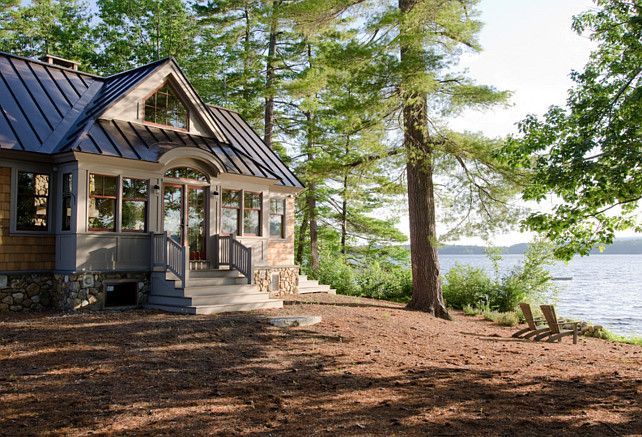
The crisp autumn air signals that winter is just around the corner. If you own a summer home, lake house, or cabin, you're probably familiar with the tradition of closing it down for the winter months. One crucial aspect of this process is winterizing the plumbing system to prevent damage caused by freezing temperatures. Here are expert tips from Aarons Water Heaters to help you ensure your home is prepared for the chilly months ahead: 1. Drain the System Turn Off the Main Water Supply : Before starting, ensure that the main water supply to your property is turned off. Open All Faucets : Turn on all faucets, both hot and cold, to let any residual water drain out. Don't forget outdoor faucets, showers, and tubs. Flush the Toilets : This helps drain the water out of the tanks. Pour a bucket of water into each toilet bowl to force out any remaining water. 2. Water Heater Care At Aarons Water Heaters, we know how vital this appliance is. Make sure to: Turn off the power (if electric) or the gas supply (if gas-powered). Connect a hose to the drain valve and let the tank empty out. Once drained, disconnect the hose and close the valve. 3. Protect Your Pipes Insulate : Protect exposed pipes with insulation sleeves or wrapping. This will provide an added layer of defense against freezing temperatures. Antifreeze : For homes with a risk of severe freezing, consider using non-toxic antifreeze in the plumbing system. Always consult with a professional before doing so. 4. Check for Drafts Inspect your home for any drafts, especially in areas with exposed plumbing. Seal off any openings or cracks to prevent cold air from getting inside. 5. Install Heat Tape For added protection, especially in extremely cold areas, consider using heat tape or heat cables on vulnerable pipes. These devices warm pipes when temperatures drop, preventing freezing. 6. Empty All Holding Tanks If your summer home has a septic or holding tank system, make sure they are emptied before winter hits. Frozen waste can damage tanks and pipes. 7. Appliances and Fixtures Dishwashers and Washing Machines : Disconnect and drain the hoses. If possible, turn off the water supply to these appliances. Refrigerators with Water Dispensers/Ice Makers : Turn off the water supply and drain the lines. 8. Professional Inspection Consider hiring a professional to inspect and winterize your plumbing system. They will have the tools and expertise to ensure nothing is overlooked. Final Thoughts Winterizing your plumbing system is essential to avoid costly damage and repairs in the spring. A few hours spent preparing can save you thousands in potential damages. If you need assistance or have questions about your water heater as part of this process, the team here at Aarons Water Heaters is here to help. We wish you a cozy winter season and peace of mind knowing your summer retreat is well-protected.
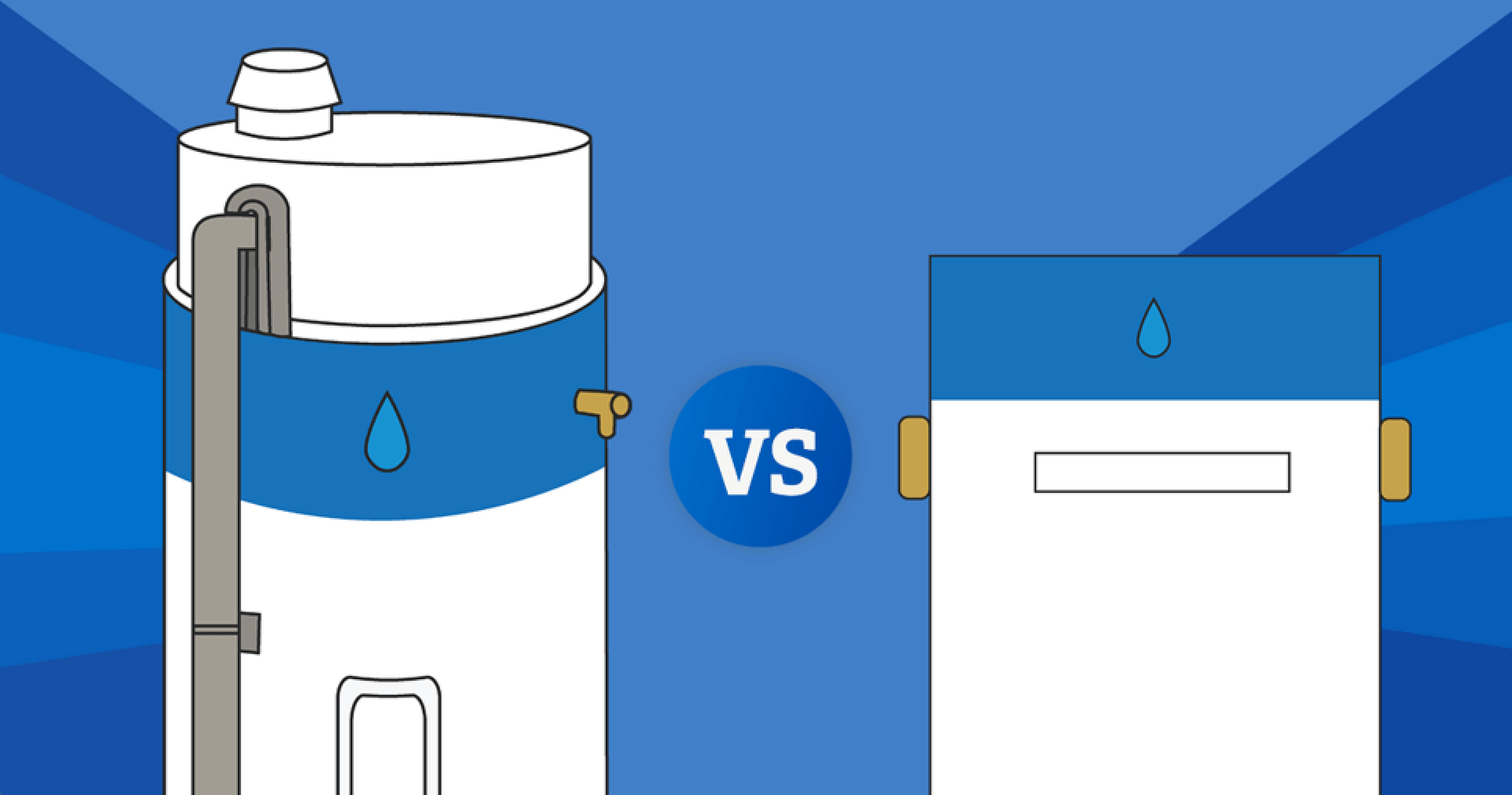
Water heaters are an essential part of every household, providing hot water for various activities such as bathing, washing dishes, and doing laundry. When it comes to choosing a water heater, two popular options are traditional tank-based heaters and tankless water heaters. Both types have their advantages and considerations to keep in mind. In this article, we will compare traditional and tankless water heaters to help you make an informed decision for your home. Traditional Water Heaters Traditional water heaters, also known as storage tank heaters, have been around for decades and are commonly found in many homes. These heaters feature a large tank that stores and heats a certain volume of water, which is ready for use whenever needed. Here are some key points to consider: Cost: Traditional water heaters generally have a lower upfront cost compared to tankless units. They are more affordable to purchase and install. Installation: Installing a traditional water heater is relatively straightforward. However, it requires sufficient space to accommodate the tank, which can be quite bulky. Placement options may be limited to areas with enough room. Continuous Supply: The storage tank in traditional heaters ensures a constant supply of hot water. The heated water is readily available, making it suitable for households with multiple hot water demands simultaneously. Energy Consumption: Traditional heaters continuously maintain the water temperature in the tank, leading to standby heat loss. This can result in higher energy consumption, especially during periods of low demand. T ankless Water Heaters Tankless water heaters, also known as on-demand water heaters, have gained popularity in recent years due to their energy efficiency and space-saving design. These heaters heat water directly as it flows through the unit, providing hot water instantaneously. Here are the key aspects to consider: Energy Efficiency: Tankless water heaters are highly energy-efficient since they only heat water when needed. They eliminate standby heat loss, which can significantly reduce energy consumption and lower utility bills. Space-Saving Design: Tankless units are compact and wall-mounted, saving valuable space in your home. They are particularly beneficial for smaller residences or homes where space is limited. Initial Investment: Tankless water heaters generally have a higher upfront cost compared to traditional units. However, the potential energy savings over time can offset the initial investment. Limited Flow Rate: Although tankless heaters provide hot water on demand, their flow rate may be limited compared to traditional heaters. This means they may struggle to meet simultaneous hot water demands, particularly in larger households. Installation Considerations: Tankless heaters may require upgrading your electrical system or gas lines to meet their power demands. Additionally, professional installation is typically recommended to ensure proper sizing and functionality. Conclusion Choosing the right water heater for your home involves considering your specific needs and preferences. Traditional water heaters are reliable and cost-effective, providing a constant supply of hot water. On the other hand, tankless water heaters offer energy efficiency and space-saving benefits but may have limitations in terms of flow rate and upfront cost. Ultimately, the decision between traditional and tankless water heaters depends on factors such as budget, household size, hot water demands, and space availability. It's essential to weigh the pros and cons of each option and consult with a professional to determine the best fit for your home. Remember, whether you opt for a traditional or tankless water heater, regular maintenance and proper usage will ensure optimal performance and longevity.
